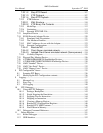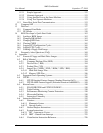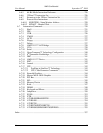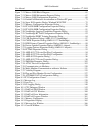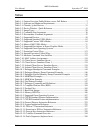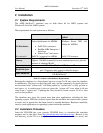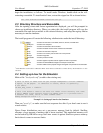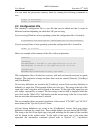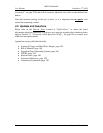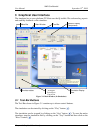
AMD Confidential
User Manual September 12
th
, 2008
Chapter 1: Overview 1
1 Overview
The AMD SimNow™ simulator is an AMD64 technology-compatible x86 platform
simulator for AMD's family of processors. It is designed to provide an accurate model of
a computer system from the program, OS, and programmer's point of view. It allows fast
simulation of an entire computer system, plus standard debugging features such as break-
pointing, memory-viewing, and single-stepping. The simulator allows such work as BIOS
and OS development, memory-parameter tuning, and multi-processor system simulation.
Section 2.1, “System Requirements”, on page 3 describes supported host Operating
Systems. Section A.3, “Supported Guest Operating Systems”, on page 186 describes
supported guest Operating Systems.
The simulator has between a 10:1 and 100:1 slowdown rate from the host CPU,
depending on whether the workload is in the CPU core or accessing simulated devices
intensively.
The simulator is designed to create an accurate model of a system from the program‟s
view. Device models contain all the program-visible state but the actual functionality is
abstracted. In many cases only the functionality needed to satisfy the software is
implemented. Software may be run on the simulator in an unmodified form. This includes
BIOS, drivers, O/S, and applications.
The simulator has a concept of time, but it is not a cycle-accurate simulator. The basic
timing mechanism is an instruction; all instructions execute in the same amount of time
and are one tick in length. This "tick" time is scaled and used by the rest of the system.
Long-latency events, like disk or floppy access, have some minimum latency built in
because we found legacy software that relied on the physical latency of these peripherals.
The simulator contains all the classic pieces of a PC system (CPU, memory, Northbridge,
Southbridge, display, IDE drives, floppy, keyboard, and mouse support). Images (hard
disk, DVD/CD-ROM, and floppy) can be created in custom sizes with the DiskTool
program (Section 13, “DiskTool”, on page 157) that is provided with the simulator. A
simulation can be saved at any point in the simulation to a media file, from which the
simulation can be re-run at a later time.
A simple diagnostic port model (known as "Port80" device) displays values written by
the BIOS in a pane of the simulator's main window. Other panes display guest (simulated
machine) and simulator host processor times. The simulator requires several files to be
specified. Binary files containing the BIOS and disk images are stored in the images
directory. The simulator home directory stores “*.bsd” files which contain the
configuration of the system (how models are connected together and their settings) and
the logical state of all the devices in the simulator. When starting a simulation from reset,
the “*.bsd” file is rather small and only contains the configuration information. When the
simulation starts, the simulated memory is allocated. When the simulation is halted and



